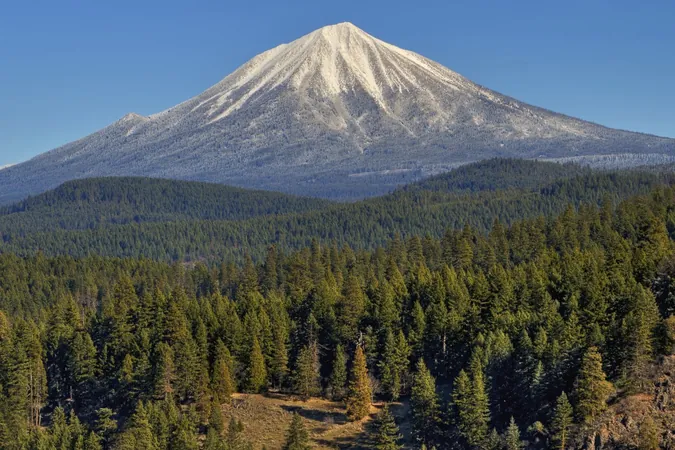
How Tree Leaves Could Be the Key to Predicting Volcanic Eruptions
2025-05-21
Author: Li
Unlocking the Secrets of Volcanic Eruptions
Predicting volcanic eruptions has long been a daunting challenge, but it’s not as impossible as one might think! By examining ground shifts, gas emissions, and seismic tremors, experts called volcanologists have been able to save countless lives with timely warnings. Now, an unprecedented partnership between NASA and the Smithsonian Institution is turning to an unexpected ally in this battle—tree leaves.
Leaves: Nature's Volcano Indicators?
Scientists have discovered that tree leaves often change color or appearance when a nearby volcano shows signs of activity. This cutting-edge collaboration harnesses satellite imagery to explore this phenomenon and enhance early warning systems to protect communities from volcanic hazards.
"Volcano early warning systems exist," says Florian Schwandner, a volcanologist and head of NASA's Earth Science Division. "The goal here is to make them more effective and timely." Early detection is crucial because, while eruptions can’t be avoided, they can be anticipated.
The Science Behind the Signs
As magma ascends toward the Earth's surface before an eruption, it emits gases like carbon dioxide (CO2) and sulfur dioxide (SO2). A successful prediction at a volcano in the Philippines in 2017 demonstrated the potential of upgraded monitoring networks, allowing for mass evacuations and, thankfully, zero fatalities.
While CO2 emissions are among the first indicators of volcanic awakening, they’re notoriously difficult to catch from space. "Volcanoes release significant amounts of CO2," explains Robert Bogue, a volcanologist from McGill University. However, subtle emissions that could signal an imminent eruption often fly under the radar of satellite detection.
Harnessing Nature's Green Indicator
The brilliance of this collaboration lies in the ability to analyze how tree foliage responds to increased CO2 levels, making them greener and more vibrant. By using tree health as a proxy for volcanic emissions, researchers can pinpoint changes tied to volcanic unrest.
Nicole Guinn, a volcanologist from the University of Houston, shares, "There are plenty of satellites capable of this analysis." With previous successes monitoring trees near Italy’s Mount Etna, the potential applications are vast.
Challenges Ahead: The Complexity of Nature
However, challenges remain. Many volcanoes are located too far from treed areas for the satellite imagery to provide valuable data. Different tree species also respond uniquely to CO2, complicating interpretation. Additionally, external factors like wildfires, inclement weather, and plant diseases can cloud the results.
Ultimately, Schwandner cautions that there’s no magical solution. "No single signal can guarantee predictions for volcanoes. Studying the effects of volcanic CO2 on trees may not be the silver bullet we hope for, but it’s a game-changer in enhancing our predictive capabilities."

 Brasil (PT)
Brasil (PT)
 Canada (EN)
Canada (EN)
 Chile (ES)
Chile (ES)
 Česko (CS)
Česko (CS)
 대한민국 (KO)
대한민국 (KO)
 España (ES)
España (ES)
 France (FR)
France (FR)
 Hong Kong (EN)
Hong Kong (EN)
 Italia (IT)
Italia (IT)
 日本 (JA)
日本 (JA)
 Magyarország (HU)
Magyarország (HU)
 Norge (NO)
Norge (NO)
 Polska (PL)
Polska (PL)
 Schweiz (DE)
Schweiz (DE)
 Singapore (EN)
Singapore (EN)
 Sverige (SV)
Sverige (SV)
 Suomi (FI)
Suomi (FI)
 Türkiye (TR)
Türkiye (TR)
 الإمارات العربية المتحدة (AR)
الإمارات العربية المتحدة (AR)